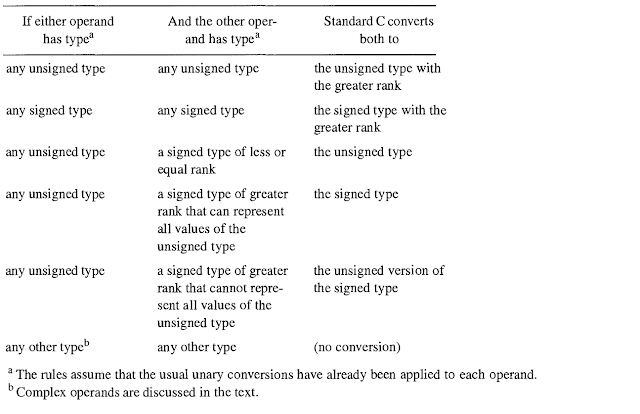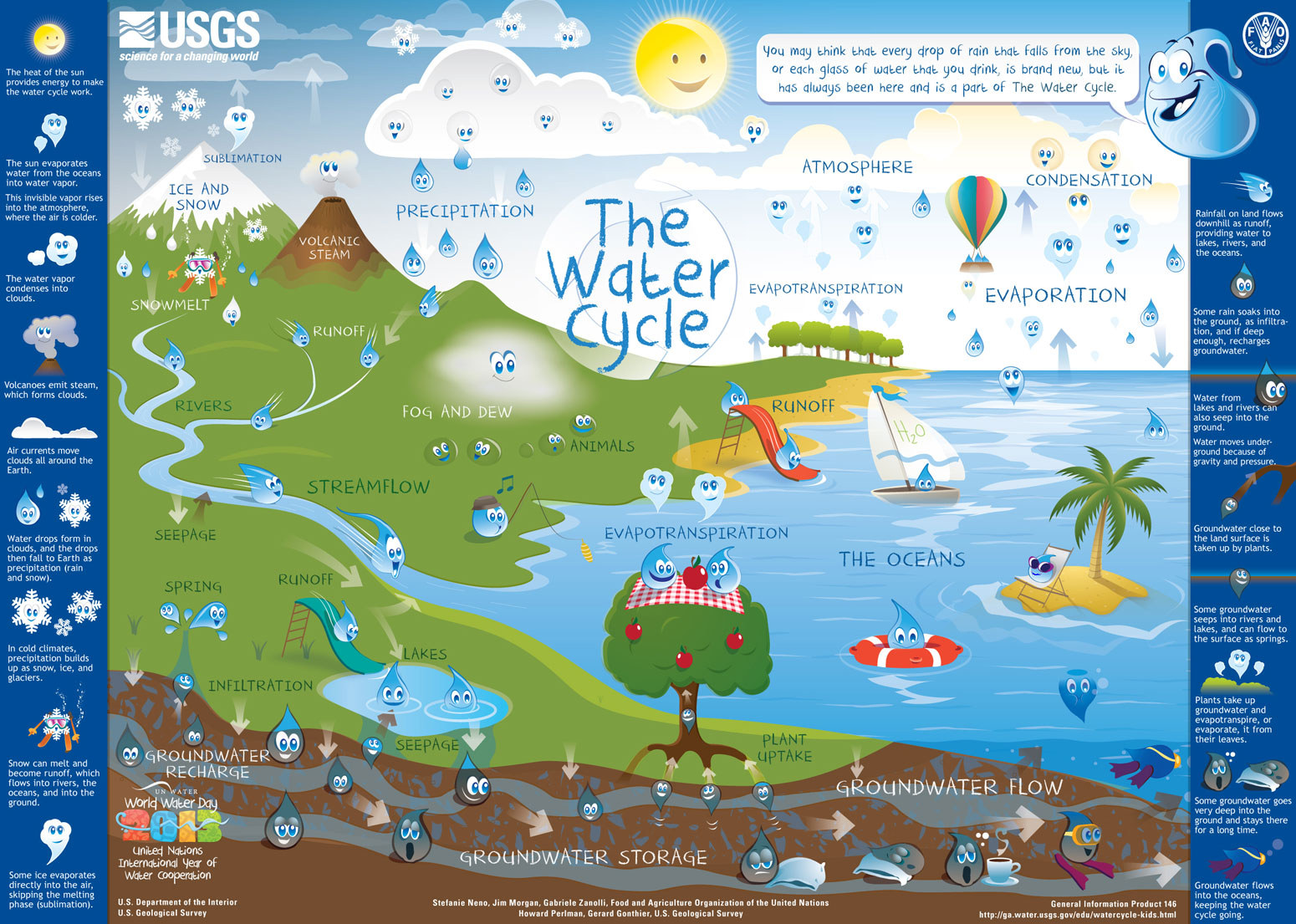Moisture
It is a small amount of water present in any object such as air, soil, grains etc.
Atmosphere
It is an envelope of gas that surrounds the Earth and
extends from the Earth's surface out thousands of kilometres, becoming
increasingly thinner (less dense) with distance but always held in place
by Earth's gravitational pull.
The atmosphere is a mixture of gases that we call air. On a dry volume basis, it consists of about 78 percent nitrogen and 21 percent oxygen. The remainder of about one percent consists of argon, carbon dioxide
and very small amounts of other gases. The atmosphere is rarely, if
ever, completely dry. Water vapor is almost always present up to about
four percent of the total volume. In desert regions,
when dry winds are blowing, water vapor in the air will be nearly
zero. This climbs in other regions to about three percent on extremely
hot and humid days. The upper limit, approaching four percent, applies to tropical areas.
Evaporation
It is the process by which any liquid is transformed into a gaseous state. The evaporation process requires an input of energy from the environment. For example, the evaporation of one gram of water requires 600 calories of heat energy.
Condensation
It is the process by which any gas is transformed into a solid or liquid state. The condensation process releases energy into the environment.
Precipitation
It is water released from clouds in the form of rain,
freezing rain, sleet, snow, or hail. It is the primary connection in the
water cycle that provides for the delivery of atmospheric water to the
Earth. Most precipitation falls as rain.
Transpiration
It is the process by which moisture is carried through plants
from roots to small pores on the underside of leaves, where it changes
to vapor and is released to the atmosphere. Transpiration is essentially
evaporation of water from plant leaves. Transpiration also includes a
process called guttation, which is the loss of water in liquid form from
the uninjured leaf or stem of the plant, principally through water
stomata.
Saturation
When
a gas holds the maximum water vapour possible at a given temperature,
it is said to be saturated. If extra water is added to a saturated gas
or if its temperature is reduced, some of the water vapour will
condense.
Partial Pressure
A gas mixture such as air is made up of several pure gas components such as oxygen, nitrogen and others. The total pressure of the gas mixture is said to be the sum of partial pressures of the component gases. In room air, the partial pressure of water vapour is around 1000 Pa.
Saturation Vapour Pressure
The partial pressure of water vapor in saturated air is called the
saturation vapor pressure. The higher the air temperature, the
greater the saturation vapor pressure, as expressed by the
Clausius-Clapeyron relation, which gives the saturation vapor pressure
over a plane surface of pure water. Saturation vapor pressure
increases rapidly with temperature.
Humidity
It is the amount of water vapour or moisture present in the atmosphere. The main source of moisture in the atmosphere is the evaporation of water from the Earth's surface and the transpiration by plants. Studies have revealed that about 10 percent of the moisture found in the
atmosphere is released by plants through transpiration. The remaining
90 percent is mainly supplied by evaporation from oceans, seas, and other bodies of water (lakes, rivers, streams).
When warm air containing a lot of water vapor (high humidity) moves into
colder temperatures (either high in the atmosphere or even on the
outside of your glass of iced tea), the colder temperatures cause water
vapor to condense into a liquid. The colder temperatures cause water vapor to condense into water droplets and can result in fog.
There are 3 types of humidity.
Specific Humidity
Specific humidity is the concentration, by mass, of water vapor in
a sample of moist air. It is, therefore, the ratio of the mass of
water vapor in a sample to the total mass of the sample moist air,
including both the dry air and the water vapor. The mixing ratio is
the ratio of the mass of water vapor to the mass of dry air in the
sample. As ratios of masses, both specific humidity and mixing ratio
are dimensionless numbers. However, because atmospheric
concentrations of water vapor tend to be less than a few percent at
the surface, and much lower at higher elevations, they are both often
expressed in units of grams of water vapor per kilogram of (moist or
dry) air.
Absolute Humidity
Absolute humidity is the water vapor density, defined as
the ratio of the mass of water vapor to the volume of associated moist
air and generally expressed in grams per cubic meter.
Relative Humidity
It is the ratio of the actual vapor
pressure to the saturation vapor pressure at the air temperature, and
the result is expressed as a percentage. Because of the temperature
dependence of the saturation vapor pressure, for a given value of
relative humidity, warm air has more water vapor than cooler air.
When air is cooled, at constant pressure and water vapor content, to
the saturation (or condensation) point, the resulting air temperature
is the dew point temperature. The difference between the actual
temperature and the dew point is called the dew point depression.
Hygrometer
It is a device used to measure Humidity. It can measure a wide range of humidity depending on the sensitivity needs. Here is a table which indicates the types of Hygrometers and the principles of sensitivity employed by them.
Humidity and Economy
Humidity affects many properties of air, and of materials in contact with air. Water vapour is key agent in both weather and climate, and it is an important atmospheric greenhouse gas. A huge variety of manufacturing, storage and testing process are humidity-critical. Humidity measurements are used wherever there is a need to prevent condensation, corrosion, mould, warping or other spoilage of products. This is highly relevant for foods, pharmaceuticals, chemicals, fuels, wood, paper, and many other products.
Air-conditioning systems in buildings often control humidity, and significant energy may go into cooling the air to remove water vapour. Humidity measurements contribute both to achieving correct environmental conditions and to minimising the energy cost of this.
Humidity and Humans
The usual values of humidity that we come across in daily weather updates is relative humidity. Human
body temperature is dependent on the air as it absorbs and removes
moisture from our skin to cool us down. If the relative humidity is
high, the amount of water evaporating from our skin is limited so we
feel warm and stifled.
The discomfort associated with high humidity is somewhat analogous
to the wind chill effect, where high winds make people feel colder.
Various indices, comparable to the wind chill index, have been
developed to quantify the humidity effect; these include the apparent
temperature, heat stress index, "humiture", and "humidex". Some of
these can be adjusted to take into account the effects on solar
radiation, wind speed, and barometric pressure on human comfort.
The U.S. National Weather Service currently employs the "heat
index." As relative humidity increases, so does human discomfort.
For example, at an air temperature of 90oF (32oC) and 50% relative
humidity, the air "feels" as if it were 96oF (36oC). The reason is
that the moister the air, the larger the resistance to moisture loss
(and therefore to heat loss via evaporation) from the human body to
the air, because the air is closer to saturation. The humidity effect
on comfort operates at low temperatures as well: people are more
comfortable in cold air when humidity is high than low.
At very high temperatures, air is rarely if ever close to
saturation because the saturation vapor pressure is very large. Thus
there are blank entries in the Table for high temperature and high
relative humidity combinations. In the United States, the highest dew
point temperatures to persist for at least 12 hours are in the upper
70'soF, which, combined with a temperature of 90oF, corresponds with
relative humidities about 70%. Only where both air and nearby water
surfaces become very warm (such as in the Persian Gulf or the Red Sea,
or immediately following a rain shower that saturates the soil on a
hot summer day) are higher temperatures and relative humidities seen.
Following is a very good indicator of the effects of humidity variations on humans.
A
pleasant indoor climate is essential for a sense of well-being in the
home. Room humidity can have a major impact on the quality of the living
environment. A relative humidity (RH) of 40-60% is generally considered
to be optimal for a comfortable and healthy home. Too much moisture can
lead to mold and overheating. Too little causes dry eyes, chapped lips
and an environment in which bacteria and viruses can thrive.
Humidity and Plants
Plants also respond to changes in humidity. Transpiration of water
vapor through leaf stomata depends on the gradient of moisture between
the leaf interior (which is saturated) and the overlying air, as well
as the availability of moisture in the soil. The lower the
atmospheric humidity, the greater the transpiration rate. The
transpiration rate is determined by a balance between the amount of
energy available to convert water from the liquid to vapor phase and
the moisture gradient.
Transpiration rates also depend on the resistance to water movement
between the leaf and the air. By analogy with the flow of electricity
through a circuit with elements of different electrical resistance,
the flow of water is modeled by considering the resistance of the leaf
stomata, the leaf cuticle, and the air in the boundary layer adjacent
to the leaf. Extension of this leaf model to crop fields or to
natural plant ecosystems can be problematic, and more sophisticated
micrometeorological methods are used.



